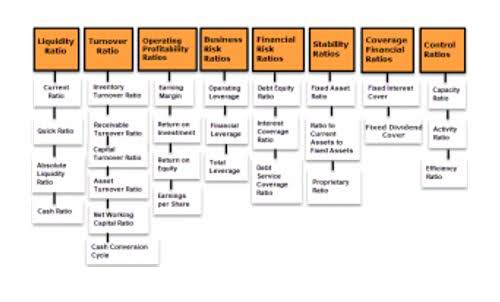
The next step is to record the date on which the account is balanced. If the balance on the credit side exceeds the debit side, it is known as a ‘credit balance’. The exceeded sum is transferred to the debit side and written as ‘To balance c/d’. Making a list of the above balances brought down produces a trial balance as follows. Now that you’ve reviewed every transaction, your account should be free of any surprises. For example, you might have deposited funds at an ATM over the weekend.
Identifying and Investigating Discrepancies
Both these balances can be determined by a quick examination of the T-account. The company uses this current account to pay suppliers and receive cash from customers. Currently, ABC Co. holds a bank balance of $50,000 in this bank account. It shows the balance after reducing all payments made from the receipts into the bank https://www.bookstime.com/ account. This balance also represents how much money is available for the entity to spend. Overall, the definition of account balance differs in accounting and banking.
What is Accounts Receivable Collection Period? (Definition, Formula, and Example)

So for example a debit entry to an asset account will increase the asset balance, and a credit entry to a liability account will increase the liability. From the table above it can be seen that assets, expenses, and dividends normally have a debit balance, whereas liabilities, capital, and revenue normally have a credit balance. It’s worthwhile to check on account balances on a regular basis depending on your transaction volume to ensure you’re staying within the limits you set for yourself. For accounts that are assets, debits increase the balance and credits decrease the balance. Comparatively, the account balance of liabilities increase with credits and decrease with debits. To understand how to calculate account balances, you need to first understand debits and credits.
Individual Retirement Accounts (IRAs)
Complete the double entry with an equal and opposite entry underneath the totals To complete the double entry posting the opposite entry of 170 is made on the debit side of the account below the totals. This entry is referred to as the balance brought down or balance b/d. For reference, the chart below sets out the type, side of the accounting equation (AE), and the normal balance of some typical accounts found within a small business bookkeeping system. For this reason the account balance for items on the left hand side of the equation is normally a debit and the account balance for items on the right side of the equation is normally a credit.
Tools such as mobile alerts and online banking platforms help track withdrawals in real-time. Additionally, savings accounts may impose withdrawal limits, such as the six-per-month restriction under federal Regulation D, which should be considered for effective management. In account reconciliation, the primary steps include comparing account balances with external records, identifying discrepancies, making adjustments to the ledgers, and documenting the reconciliation process.

Managing factors that impact your account balances
- If they do not, then your account is unbalanced and you have money that is unaccounted for.
- Simply login and navigate to the ATO services section for comprehensive insights.
- Balancing your checking account and monitoring your transactions can help ensure any mistakes are caught and can be fixed.
- Reconciling bookkeeping accounts is a fundamental activity in managing a business’s finances.
- The next periods transactions are added to the balance brought down and at the end of the period the balancing off accounts process is repeated.
Add up all the deposits and withdrawals so you know how much you should have in your account. Place a checkmark (on both the bank statement and the check register) next to matching items. Double Entry Bookkeeping is here to provide you with free online information to help you learn and understand bookkeeping and introductory accounting. Chartered accountant Michael Brown is the founder and CEO of Double Entry Bookkeeping. He has worked as an accountant and consultant for more than 25 years and has built financial models for all types of industries.
Double Entry Book-keeping with Ledger Accounts
Use the right software, track your cash flow, and Certified Public Accountant make use of detailed charts, and you’ll be in the best position possible when balancing your accounts. From the trial balance we can see that the total of debit balances equals the total of credit balances. This demonstrates for every transaction we have followed the basic principle of double-entry bookkeeping – ‘ for every debit there is a credit ’. In order to prepare a trial balance, we first need to complete or ‘balance off ’ the ledger accounts. Then we produce the trial balance by listing each closing balance from the ledger accounts as either a debit or a credit balance.
- These balances indicate the nature and classification of the account.
- The account balance at the start of an accounting period is referred to as the beginning balance or the opening balance.
- So for example a debit entry to an asset account will increase the asset balance, and a credit entry to a liability account will increase the liability.
- They would then adjust for charges, deposits in transit, and outstanding checks to reconcile the final balance.

When you look at your balance sheet, you’re likely to find some of these account balances. Interest can either grow or deplete an account balance, depending on the account type. Savings accounts typically earn interest, expressed as APY, which contributes to balance growth. balancing an account For instance, a $5,000 savings account with a 2% APY earns approximately $100 annually. Conversely, credit card accounts accrue interest on unpaid balances, calculated using the APR. A $1,000 credit card balance with a 20% APR incurs about $200 in annual interest if unpaid.

- Bankrate.com is an independent, advertising-supported publisher and comparison service.
- The reconciliation statement thus is essential for identifying discrepancies between the two records.
- Rather than having them lopsided one way or the other, it’s about finding the balance point.
- In addition to showing the number of assets, liabilities, and expenses, it also gives the business organisation a fair view of transactions.
- Account balances in accounting are a part of a company’s Statement of Financial Position.
- Balancing means the writing of the diversity between the amount columns of the two sides in the lighter (minor total) side so that the grand totals of the two sides become equivalent.
Reconciling account balances ensures accuracy and integrity in financial records. Start by gathering documentation, including bank statements and transaction receipts, to create a comprehensive view of the account. Using accounting software or spreadsheets can streamline this process. Reconciliation serves a pivotal role in the accuracy and reliability of financial statements, which are essential for reporting a company’s financial health accurately. It ensures that financial records, such as balance sheets and income statements, are free from errors and discrepancies. After postingthe journal entries to ledger accounts and extracting the balance of ledgeraccounts, the trial balance is prepared.
